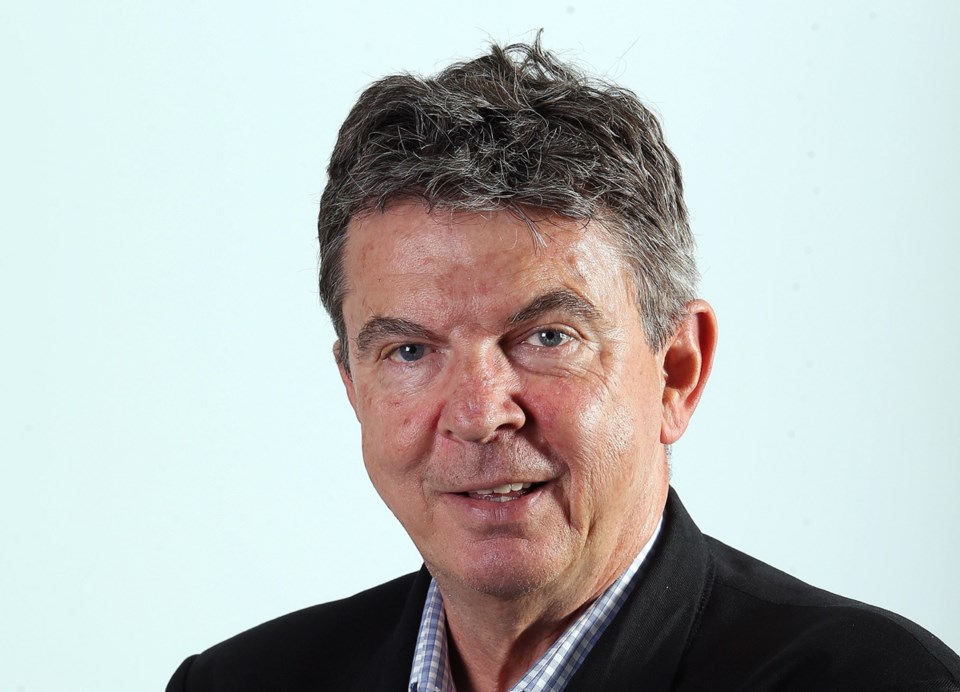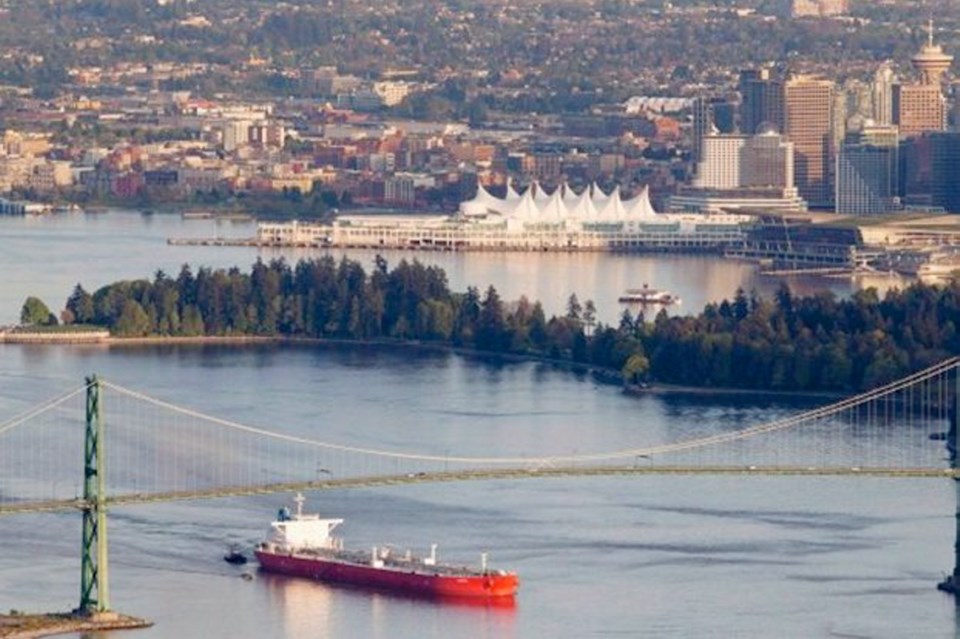 The highest-visibility impact of the Trans Mountain Pipeline, as far as Victoria is concerned, would be the tanker traffic going by the waterfront.
The highest-visibility impact of the Trans Mountain Pipeline, as far as Victoria is concerned, would be the tanker traffic going by the waterfront.
The National Energy Board devoted several chapters to the marine effects of the proposed new line from Edmonton to Burnaby. It concluded, as with all the other aspects of the pipeline, the rewards outweigh the risks.
The marine risks relate to ship movements, and there would more of them. The Burnaby terminal now dispatches about five tankers a month on the 296-kilometre, 15-hour trip out Burrard Inlet, through the Gulf Islands, past Victoria and out to the end of Canadian waters. Twinning the existing pipeline would increase that by about 30 ships. That’s 360 departures a year, meaning 360 more arrivals a year, for a total of 720 more ship movements a year.
But Trans Mountain supplied a traffic study of the Salish Sea circa 2012 to the NEB and it shows how busy the Juan de Fuca, Haro and Georgia straits already are.
Those supertankers cruising off in the distance that are so familiar to beachfront strollers really add up. The study counted 1,197 tanker movements a year through Juan de Fuca Strait, most of them headed to the U.S. refineries around Cherry Point. There are 391 tankers a year in Haro Strait, on the Canadian side, and similar numbers in the Strait of Georgia and in Vancouver’s harbour. Tankers are only a small part of the 23,000 ship movements a year in Juan de Fuca and Georgia straits.
The increase in traffic that would result from the new pipeline would include corresponding increases in tug traffic along the route. Of all the marine life that could be affected, the endangered southern resident killer whales — 84 members as of December — are likely the highest-profile example. They’ve been symbolic of the West Coast for generations, and have the most emotional impact on the most people.
The news on that front is bad, and worse.
To paraphrase, the NEB found the tanker traffic would have a serious adverse effect on them, but they might be doomed in any event.
The panel said the southern resident killer whale population “has crossed a threshold where any additional adverse environmental effects would be considered significant.”
Marine traffic generally is increasing, so the additional tankers would just add to the cumulative impact that is already in effect. Nonetheless, the additional noise and the increased danger of vessel strikes are considered to be a significant adverse effect on the whales.
The NEB panel agreed with Trans Mountain’s view after various studies that the acoustic effect of underwater noise would not permanently harm the whales.
Acoustic studies are underway on the effect the overall marine traffic is having on marine mammals. Trans Mountain is participating in some, and one of the NEB conditions is that it do more mitigation. The idea of carrying whale-spotters on the tankers is also being discussed.
Modelling suggests a tanker would come into proximity with a killer whale about once a week. One study found that over 40 years, there have been six cases of vessels striking killer whales.
The panel noted a Raincoast Conservation Foundation study that concluded “the factor with the largest effect on depressing population size and possibly leading to extinction is a reduction of chinook [salmon] prey base.”
That group submitted modelling of the whale population with and without increased tanker traffic. It concluded that if baseline conditions persist, the killer whale population will most likely remain about at its current size or continue a very slow decline. If tankers increase, the effects would increase the risk of extinction and accelerate decline.
The panel noted the Tsawwassen First Nation’s submission that “the killer whale population has declined over recent years and that population recovery seems unlikely unless drastic changes to those factors compromising the population’s demographics occur.”
Despite the finding that more tankers would have an adverse impact, the NEB noted Trans Mountain has committed to following a multi-party action plan to help the whale population recover. It is also involved in salmon initiatives that could increase the abundance of the whales’ main source of food.
The political decision on all the trade-offs detailed in the report is due late this year.



